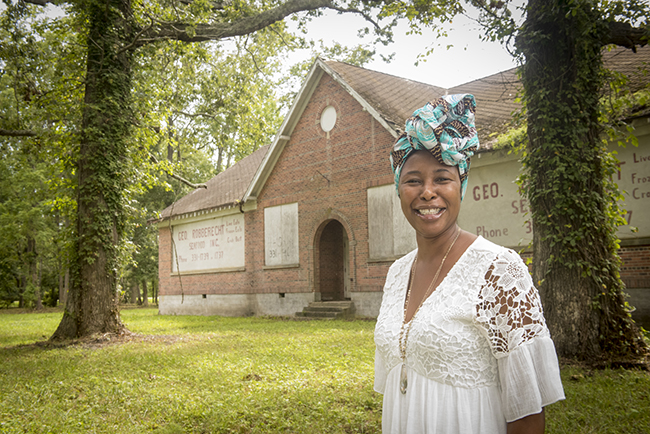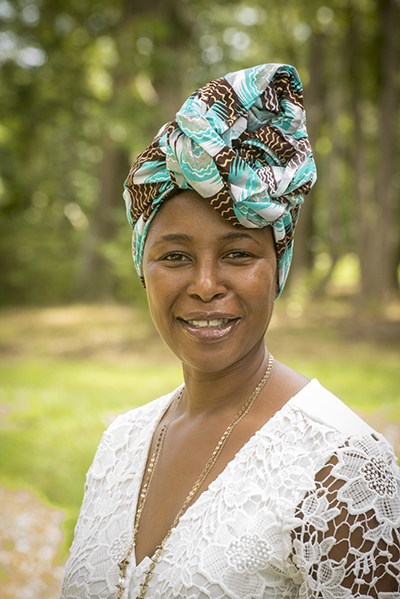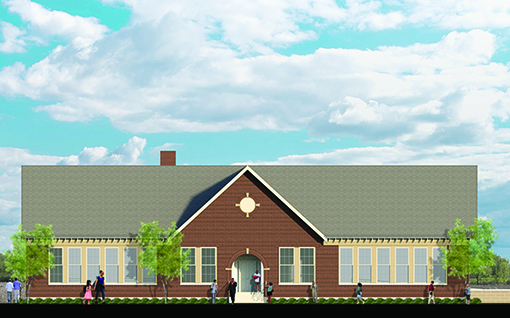
By Jim Ritch
Community college courses could come to the once legally segregated Cape Charles Elementary School.
The start of classes is hardly imminent, however. Major renovations need to be done to the long-abandoned school building, built in 1929 partially with funds from philanthropist Julius Rosenwald.
Tevya Griffin, president of the Cape Charles Julius Rosenwald Renovation Initiative, said that a meeting prior to the COVID-19 quarantines resulted in an agreement in principle with Eastern Shore Community College to expand the college’s reach in southern Northampton County.

The next step, as the initiative restarts following the continued easing of pandemic restrictions, will be to negotiate a memorandum of agreement with the college, she said.
The memorandum would help the group obtain grant funding to restore the school to its original appearance and convert it to a community center benefiting people of all races.
The center would include public meeting rooms, a hall for social events and weddings, a community kitchen, and museum displays.
Since the initiative purchased the building in January 2019, it has completed engineering inspections. Richmond, Va., architect John Humphrey donated the drafting of floor plans, elevations, and renderings.

“Other than the roof, everything is remarkably sound,” said Beth Walker, board member and co-owner of the Northampton Inn in Cape Charles.
Leaks in a valley of the roof and a corner will need to be patched “the sooner, the better,” she said.
The building benefited from being built late in a construction campaign started by Booker T. Washington and Julius Rosenwald, one of the founding partners of Sears, Roebuck & Co.
Most of the almost 5,000 Rosenwald schools built around the country were made of wood, but the Cape Charles building came late in the building campaign when exterior walls were made of brick.
More good news from the inspections was how many of the original features remain intact.
Light fixtures, doors, a chalkboard, and even a segment of the original curtain around the auditorium’s stage, remain.“We have nearly all the historic windows,” Walker said.
The windows were then considered part of the school’s cutting edge, educational design. They were large and faced east, creating bright, sunlit rooms for learning.

After the school closed in the 1960s, some of the windows were removed and stored in the attic. Others were pocketed behind concrete on the front of the building.
The renovation project will also need to lay a new floor in the auditorium. The original floor was removed in the 1960s when the building was converted from a school to an eel-packing plant. A sand floor was poured, which accommodated heavy equipment.
Another major renovation expense will be parking and site preparation.
“We need to bring the site up to functioning the way that we want it to,” Walker said.


